Day 4: Oona Doherty, DDF Artist in Residence, 2020-2022 A curated essay by Aoife McGrath
Available Now
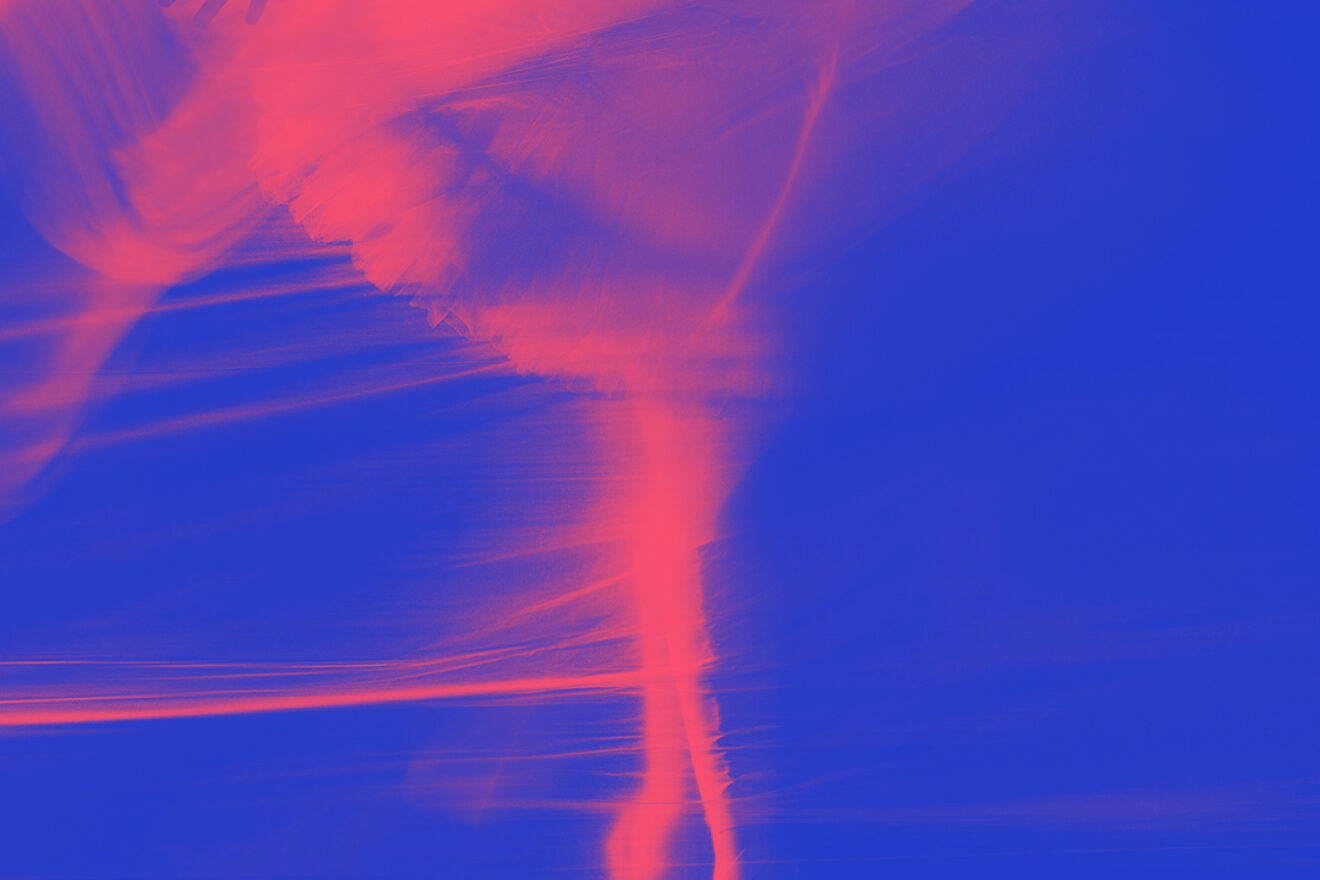
Mon 01 Jun 2020
Examining the work, career and influences of Oona Doherty, DDF Artist in Residence (2020 - 2022).
↓ Read moreWhere?
Right Here
Free, no registration required
In the four short years since Oona Doherty toured internationally with her debut solo work, Hope Hunt and the Ascension of Lazarus in 2016, she has become established as a leading dance artist of her generation. Currently the Dublin Dance Festival (DDF) Artist in Residence, her work has garnered numerous international awards, and in 2019, her second major work, Hard to be Soft: a Belfast Prayer, was named the number one dance show of the year by The Guardian’s dance critic, Sanjoy Roy. Words often used to describe her performances include “visceral”, “raw”, “powerful”, and “honest”, and her works have been acknowledged for their ability to transform perceptions of corporealities defined by limiting identity markers of class and gender. Although identity politics are an important strand of her work, they are not the only driving element. At the core of her choreography is an intoxicating blend of a sometimes heart-rending, sometimes joyful, exposure of human vulnerability, linked with an intense hunger for connection and an expanded knowledge of self and other. Her dances fearlessly collide the miasma of the everyday, both in gesture and theme, with references to a more soulful, spiritual dimension of existence; ambitions that are gloriously grand, but also grounded in a wide-ranging research process and meticulous attention to corporeal detail.
Significant works to date:
A disarming use of unexpected couplings can be found across all of Doherty’s works. In Hope Hunt, after tumbling out of the boot of a bass-shaken car to accost the audience before entering the performance space, Doherty dances a 40-minute solo that starts as a shuddering kaleidoscope of defensive postures and dialogue between young men on the streets of Belfast, before transitioning into a dance that raises a corpse from the dead to a soundscape that blends recordings of street violence with Gregorio Allegri’s late-Renaissance choral masterpiece, Miserere mei, Deus.

A merging of the elegiac and the hopeful continues in her next work, Hard to be Soft (2018), in which Doherty looks again to her hometown of Belfast to create a ‘physical prayer celebrating all we have and an invocation for all that we are missing’ (Doherty). An episodic structure brings other bodies into the mix alongside Doherty’s bookending solos; a high octane section for a “Sugar Army” of ten teenage female street dancers is followed by a sweaty, belly-clashing duet for two men that affords expression of deep, unspoken love and tenderness, bringing an unanticipated lump to the throat. In all of her projects, Doherty works across several media, including live performance, film, visual art, and poetry. An underpinning source of inspiration for Hard to be Soft was Doherty’s own poem, A Concrete Song, which she also created a screendance version of in collaboration with filmmaker Dave Tynan:
We’re all made of germs
The planets and the cells
The Buckfast and the God
People aren’t so bad
But you see at night
Stage spotlights and dual carriageways
Euroland queues and the white cube
A da’s back
The black box, my box
Filled up with passion and rage
Woman and man and beast and sun and angel and nothing
All at the same time nothing
The Adrenaline future
Small town
Generational cellular imbalance
Hail to the dot
An inward shove
Fucking Belfast love.
(Excerpt from A Concrete Song, Oona Doherty, 2016)
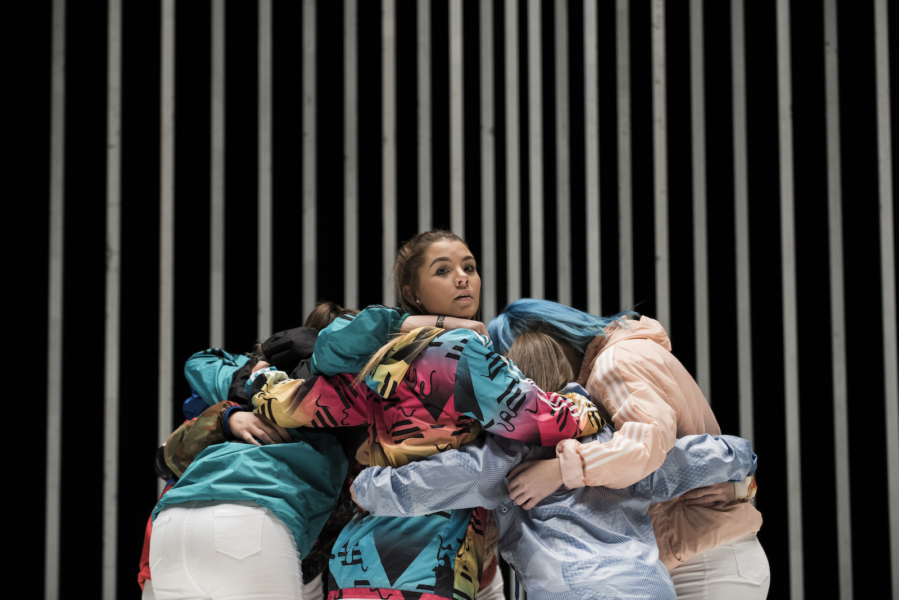

In her most recent full-scale work, Lady Magma (2019), a group of women inhabit a reimagined space for female expression that Doherty forges in the (seemingly) impossible gap between 1970s sexist representations of female sexuality, and the fleshy, danced realities of an unbounded, flowing, pulsing female sensuality. Doherty’s continuing search for a way to choreograph what she terms a ‘freedom or chaos state’ emerges more clearly in this work, in which she creates a ‘sincere, feminist, pagan, sexual movement language’ founded in the rhythms of female orgasm [1]. Doherty’s research of the ancient Greek cult of Dionysus informed decisions about staging, and the performance is prefaced by an initiation of the audience into the Magma cult, as we are led by Doherty in a breathing ritual to prepare us energetically for the performance. You get a sense watching her work that she doesn’t merely want to move you, she wants everyone to come together to move the world.







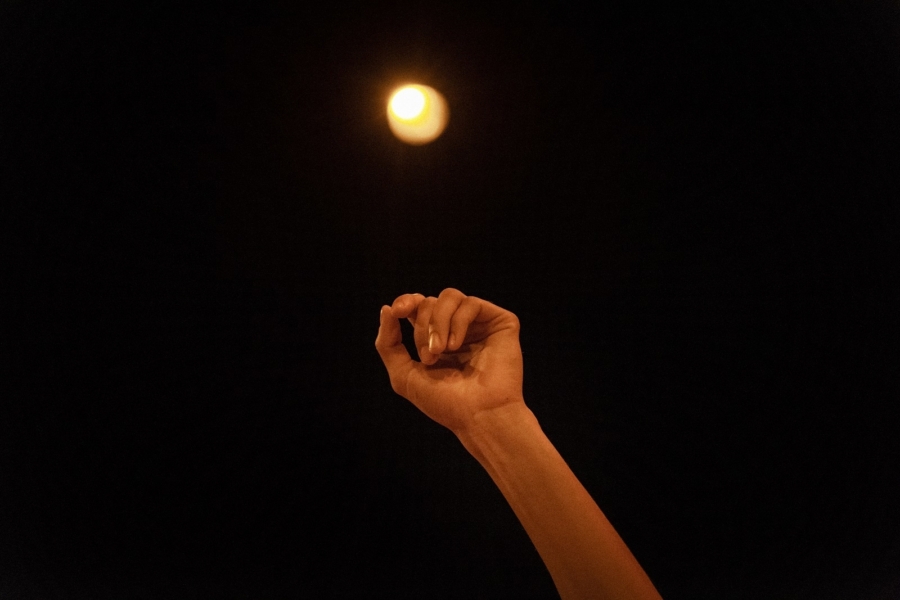







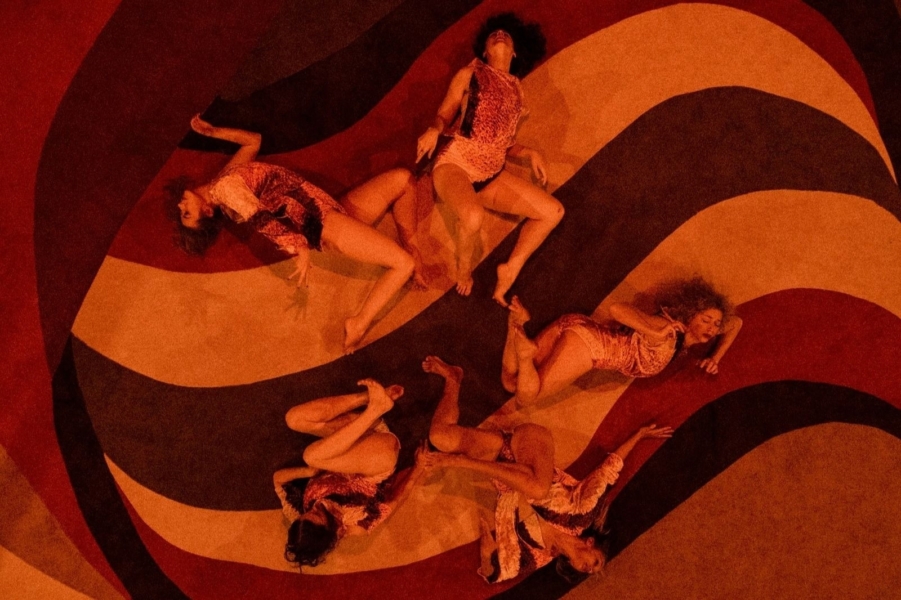
Inside/Outside – biography, training, and choreographic process
Doherty moved to Belfast from London with her Northern Irish parents in 1992 at the age of ten. Transplanted to this new terrain, her London accent initially marked her as an outsider in a city struggling with the social and political tensions created by the violence of the Troubles (a three-decade long period of armed conflict in Northern Ireland that ended with the Good Friday Agreement in 1998). But Doherty found her tribe, and calling, in dance: competitive disco dance, and school dance classes with Marie Manion at St Louise’s Comprehensive on the Falls Road. She then went on to train professionally at London Contemporary Dance School, the University of Ulster, and Trinity Laban. As a dancer, Doherty is known for her rare intensity and strength of expression. She has said that her movement and choreographic style is particularly influenced by her days working with Krystel van Issum and Guilherme Miotto of T.R.A.S.H. dance theatre company, which originated in a punk collective in Tilburg, the Netherlands. Doherty has also been acclaimed as a dancer in the work of Irish choreographer Emma Martin, bringing a charged and moving presence to works such as Tundra (2014), Dancehall (2015), and Enda Walsh’s play, Arlington (2016).

Although Doherty rarely explicitly references broader socio-political contexts in her work, her outsider/insider experience growing up in Northern Ireland undoubtedly feeds an ability, especially apparent in her earlier works, to view Belfast from the dual positions of both compassionate observer and embodied knower. The muscle memories of the figures she portrays are infused with hauntings of complex histories:
"I think a whole generation of People here [in Belfast] are holding an era in their bones, in muscle memory, in tissue. It can seep out in the bar into their kinesphere and into others. A society aura that is holding. Holding....StUff” [2].
In Hope Hunt and Hard to be Soft, we see the struggles created by particularities of environment, but the dance also transcends specifics of time and place to connect with universal themes of struggle and survival. Similarly, Doherty’s conceptual influences stretch beyond any geographical or disciplinary limits, incorporating a curiosity in contemporary philosophy, diverse spiritualities, social theory, and music and art history. Doherty’s collage works, which form part of the research process for her choreography, can be seen as a visual representation of her stitching together of an affective topography of sources, ideas, and feelings.

Choreographer and artistic director of Irish Modern Dance Theatre, John Scott, who has performed in Doherty’s work, speaks of his experience of the interweaving strands of different art disciplines in her choreographic process:
"For Hard To Be Soft, Oona made a form of the dance in drawings and plans and little poems and phrases before we entered the studio. As a choreographer working as a dancer for another choreographer, I love how Oona grows her material. The duet, ‘Meat Kaleidscope’ [a section of Hard to be Soft] for me and Sam Finnegan […] is an actual physical and emotional task. Our dance is generated from three physical/mental states: Concrete, Manuka Honey and Lazarus (waking from the dead and every part of your body turning to stained glass opening to the light). She observes and feels everything from a dramatic fall to a tiny finger tremor, removing the superfluous and highlighting vital details […]. After she finds the dance, she composes a poetic text paralleling the movement and makes an abstract film, so the dance exists in three forms. We never mark, we dance in a real place in the truthful and tragic present moment, devoid of artificiality." [3]
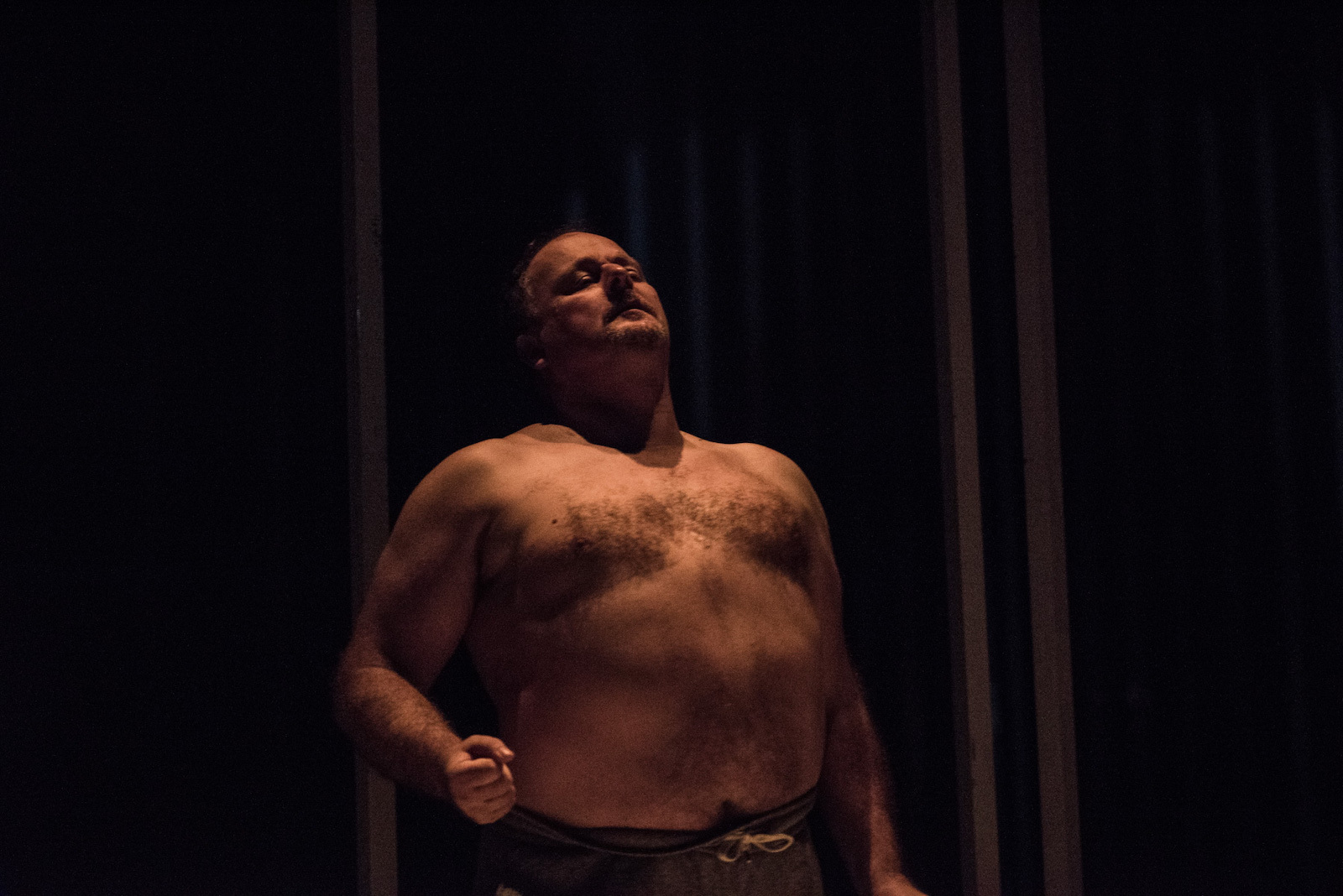
Tracing contemporary and historical connections:
Isobel Harbison writes that, ‘[t]o watch Oona Doherty dance is to witness something quite supernatural, like a crowd jostle and flicker through the body of a woman’ [4]. In her solo choreographies, Doherty’s absorption and transformation of everyday postures, vocal gestures and attitudes through repetition and mutation is a method sometimes reminiscent of a DJ’s techniques of sampling, scratching (back and forth, back and forth), and crossfading. The energy of trance and club dance is an important element of her work, and she has collaborated with Northern Irish DJ, electronic musician, and composer, David Holmes, on several of her projects.
This method of movement sampling also brings to mind Valeska Gert’s (1892-1978) socially critical, solo, cabaret dances in 1920s Berlin. Gert, a pioneering influence on later developments in punk and performance art, was similarly interested in social change, portraying observed movements of various people and incidents from Berlin street life, including works embodying a traffic accident, a corpse, and a sex worker engaging a customer and having an orgasm. Doherty, like Gert, has chameleonic abilities, and is unafraid to show the full range of human expression, mixing the grotesque and the violent with the fragile and the sublimely beautiful. However, Gert’s use of satire placed her work at an always-knowing distance from the figures she embodied, whereas Doherty’s work – often humorous, but never ironic - searches, fundamentally, heart-on-sleeve, for connection.
Current projects and future work:
Doherty’s relationship with DDF stretches back to her work-in-progress showing of Hard to be Soft as part the First Looks platform in 2015, which led to a joint commissioning of the work between DDF, the Abbey Theatre, Prime Cut Productions and Belfast International Arts Festival. During her current tenure as artist in residence with DDF, Doherty is researching a new work, Navy Blue. This piece forms part of her Blue series that began with the solo work, Almost Blue, for dancer and choreographer, Steve Batts, commissioned by Irish Modern Dance Theatre in 2019. Almost Blue continues Doherty’s work with the chaos state explored in Lady Magma, furthering a choreographic approach that enables, ‘listening deeply to multiple possibilities of the cosmos as an impetus to move’ [5]. Doherty’s plans for the next two instalments – A Darker Blue and Navy Blue - will see her exploring the cosmic motion of bodies falling through space with larger, group choreographies, and the further development of a “chaos technique”. As with all her work, in addition to pushing previous limits of her choreographic form and expression, these pieces also have a deeply personal significance, and Doherty explains that, ‘[t]he blue series also came from me feeling ‘blue’, depressed and struggling for answers from my dancing. For me it was the colour of loneliness’ [6]. As part of her residency, Doherty had planned to be workshopping in Dublin’s Peacock theatre this May, but the global pandemic intervened. While people all over the world grapple with the isolation of social distancing and the new realities left in the wake of COVID-19, the promise of a choreographic exploration of loneliness and chaos from Doherty will be a dance worth waiting for.

References:
1. Doherty, Lady Magma: the birth and death of a cult, p.10
2 Doherty, https://www.hardtobesoft.com/about
3 John Scott, in discussion with the author, May 2020
4 Harbison, ‘Oona Doherty at Dance Umbrella 2019’, ArtReview, 30th October 2019
5 Doherty, in discussion with the author, May 2020
6 Doherty, in discussion with the author, May 2020
Written by Aoife McGrath.
This piece may not be reproduced without the author's consent.
Dr Aoife McGrath is a lecturer at the School of Arts, English and Languages, Queen’s University Belfast. Her book publications include Dance Theatre in Ireland: Revolutionary Moves (Palgrave, 2013), and Dance Matters in Ireland: contemporary processes and practices (Palgrave, 2018). Recent choreographic work includes Please (NIMHAFF, 2017), and Let Down (Being Human Festival, Breastival, Northern Ireland Human Rights Festival, 2018). Aoife is Co-President of the Irish Society for Theatre Research and co-convenor of the IFTR Choreography and Corporeality Working Group.
https://pure.qub.ac.uk/en/pers...